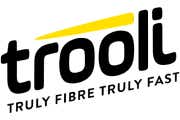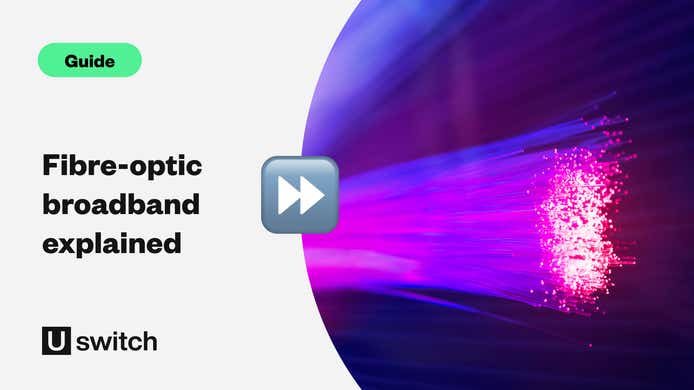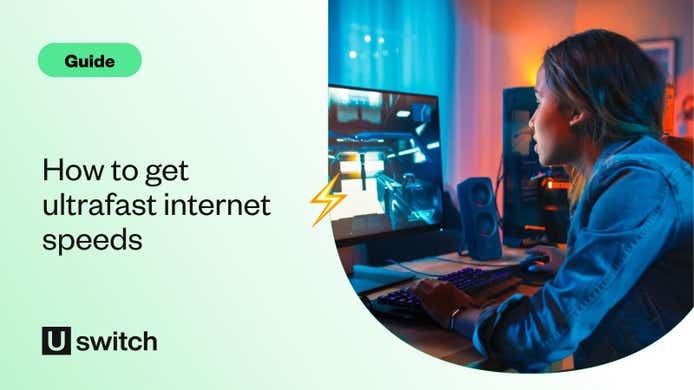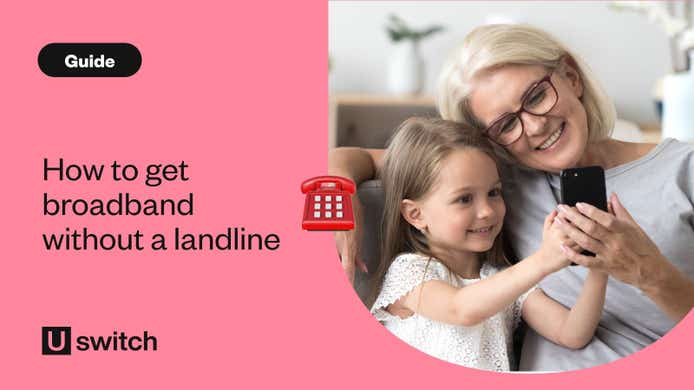Full fibre is the new generation of broadband. It provides the fastest internet speeds available in the UK and offers the most consistent, reliable home broadband connection.
With full fibre broadband, common internet issues like buffering and outages are almost nonexistent. Heavy internet activities like 4K streaming or online gaming will be ultra-smooth, even if multiple people are doing them at the same time.
The technology can future-proof your home broadband for years to come because you won’t need to install new cables again for decades.
Find out what makes full fibre so helpful and what you can do with the speeds it supplies.
What does 'full fibre' mean?
Full fibre is a fibre-optic broadband connection that goes directly to your property. It’s also referred to as ‘fibre-to-the-premises’ (FTTP).
Until fairly recently, broadband connections mostly relied largely on copper phone lines to get to your property. That’s because providers need to dig up almost every residential street in the country to get fibre cables to each home and office.
Part-fibre broadband has been available in most of the UK for over a decade, but these connections aren't as strong or reliable. And while the speeds they offer are enough for many households right now, they soon won’t be able to handle our increasing demand for data.
As a result, broadband providers are ramping up their efforts to connect fibre cables to as many properties as possible.
What’s the difference between part-fibre and full fibre?
Find out the difference between the part-fibre broadband (which we've largely been using for the last 10-15 years) and the newer, much faster, full fibre.

Part-fibre
Part-fibre broadband is one of the most popular types of connection in the UK. Powered by Openreach, it’s available to over 98% of the country and has been used by most of the UK for the last decade or so.
It’s referred to as ‘part-fibre’ because only part of the connection relies on fibre-optic cables. It reaches all the way to your local street cabinet, while the rest of the journey to your home uses the same copper phone lines as your landline.
It's much faster than full-copper ADSL broadband, with average speeds between 30 and 70Mbps, compared to ADSL’s 10Mbps. But because it can only connect fibre cables to the local street cabinet, there is a big drop-off in speed and reliability once the copper cables take over the rest of the journey.
Full fibre
Full fibre, as the name suggests, connects fibre cables straight to your home. This means there’s no slowdown of the data between the street cabinet and your property, and the internet speed (and strength) is a lot better as a result.
These connections can provide a wide range of very fast internet packages, and they don't really charge all that more either. Ultrafast full fibre providers supply speeds from around 100Mbps and higher, whereas the fastest full fibre speeds now offer 1Gbps speeds and above.
It also means you can connect to the internet without needing a phone line, too. Line rental no longer costs extra to use, but it means you can just rely solely on the new fibre cable even if you still want to keep your home phone.
Full fibre internet speeds explained
Mbps stands for megabits per second, which is the most common way of measuring internet speed.
A speed between 30-70Mbps should realistically be the minimum you'd want nowadays. It'll mean you can reliably work from home or game competitively online. And more than one person will be able to stream movies or TV shows at the same time.
But 100Mbps and above is quickly becoming the speed many households will start finding useful. With the quality of TV shows and video games getting better, smart home devices on the rise and lots more working from home, full fibre connections with these speeds are becoming a lot more popular.
Full fibre is also far more reliable than part-fibre. So even if you want to keep your current speed, it may benefit you to see if there's a full fibre alternative for it.
How does full fibre broadband work?
Full fibre is a lot simpler than other types of fixed broadband. With no switch to a different set of cables, it’s a straightforward case of fibre cables connecting directly from your provider’s exchange to your property.
Here’s a brief step-by-step guide to explain how it works:
- The internet data you need is received by your provider at its broadband exchange
- The data is sent at lightspeed via your provider’s fibre-optic cable network
- The data arrives at your home, where it’s sent out from your router’s Wi-Fi signal to your device
This is why full fibre is the gold standard of broadband. Not only is it significantly faster than part-fibre, but it also completely simplifies and upgrades the network for everyone involved.
Plus, even though the maximum speed on offer from full fibre packages is currently about 1Gbps, network operators can much more easily upgrade this in the future if necessary.
So by the time households eventually need faster speeds than 1Gbps, the process of speeding up the network won't involve having to install anything new at home.
What are the cheapest full fibre deals?
Full fibre deals used to be a bit more expensive than superfast fibre deals, but many are now a similar, and sometimes cheaper, price. But it usually depends on which provider you’re looking at.
Check your address on our dedicated fibre broadband page to see if you can get full fibre deals where you live.
If you’re looking for cheap full fibre, Plusnet and Vodafone offer FTTP deals at very reasonable prices — even cheaper than other providers’ part-fibre offers. But smaller alternative providers, known as 'altnets', will offer the cheapest full fibre deals.
They run their own networks independently, so they can keep their prices a lot lower than most bigger providers that rent internet access from big networks like Openreach.
The cheapest full fibre broadband options will probably come in the form of social tariffs offered by these altnets, but they're only available to customers who receive Universal Credit or other government financial support schemes.
Check our broadband social tariffs guide to see if you’re eligible for any of those. Otherwise, viewing our cheapest fibre broadband deals on Uswitch is likely best.
Find cheap broadband deals
Browse our selection of low-cost broadband deals if you want to save money on your next broadband service.
Not ready to switch just yet?
If you still have some time left on your current broadband contract, feel free to sign up for an end-of-contract reminder with Uswitch.
Just add your contract end date and address, and we'll send you a notification when you're ready to switch to a new provider without charge. We'll even throw in some examples of new customer deals available at your address.
Broadband renewal reminder
Tell us your contract end date and we'll remind you to save
Contract end date
Get reminders to find a better deal when your contract is ending. We may use your address and current provider to show you relevant deals. Terms and conditions apply. Privacy notice.
Not able to switch just yet?
If you're still mid-way through your broadband contract, feel free to provide us with its end date. We'll remind you when you can switch without charge.
Broadband renewal reminder
Tell us your contract end date and we'll remind you to save
Contract end date
Get reminders to find a better deal when your contract is ending. We may use your address and current provider to show you relevant deals. Terms and conditions apply. Privacy notice.
Which providers offer FTTP deals?
All of the major UK broadband providers offer full fibre deals, and many smaller 'alternative' providers offer them regionally across the country too.
BT, Sky, Plusnet and NOW use Openreach’s growing FTTP network, whereas TalkTalk and Vodafone rely on a mixture of Openreach and a full fibre network called CityFibre.
Smaller providers like Hyperoptic, Community Fibre and Gigaclear operate on their own independent networks. They’re available to fewer properties than the big players, but they're also expanding to more properties each month.
Here's a selection of the broadband providers that offer full fibre deals on Uswitch.
Is full fibre worth it?
For the most part, yes. The price of full fibre is now quite often the same (sometimes even cheaper) as many part-fibre deals, despite full fibre being a much faster, more reliable connection.
Prices have gone down in recent years as availability has shot up, so it's now likely a very wise choice for you, especially if you work from home or have multiple people at home streaming TV at the same time.
If you're able to get a much better connection for roughly the same price as an older, slower one, then it feels very sensible to upgrade it full fibre. You might even find cheaper full fibre deals if any smaller alternative providers are available in your area too.
Can I get full fibre in my area?
Currently, full fibre is available to nearly three-quarters of the UK, and its coverage is growing at an impressive pace.
If it's not available to you just yet, it’s highly likely that you’ll be able to get it in the next couple of years. All the big providers converting large parts of their existing networks to full fibre. But also, there are dozens of smaller full fibre-only providers that are helping to improve coverage in rural parts of the UK, too.
To check if you can get full fibre, you’ll need to enter your address into a broadband postcode checker, like ours on Uswitch.
Providers are working hard to expand their FTTP networks across the country. And once they’ve finished installing fibre cables in a new street, they quickly update their availability online. So make sure you regularly check your address to see if it’s available.
If full fibre networks are currently being installed in your neighbourhood, you may also receive a notification from your provider. These messages often include a rough timeline, which might help you determine when it’ll be ready for you.
If you’re moving to a new home, it’d also be worth checking the availability at your new address.
Do I already have full fibre?
There's a chance you might already be on a full fibre connection. Many broadband providers include 'Full Fibre' in the name of their full fibre broadband packages, so you can easily see if you're on one by checking a recent bill.
However, if you've been on the same full fibre package for a while, it might have been called something different when you signed up. So you can also check by seeing what broadband speed you signed up for.
If you have a broadband speed of 100Mbps or more—and you're not with Virgin Media—then you are likely already using a full fibre connection. Virgin Media mostly uses a different type of broadband that's similar, but slightly different from full fibre.
There are some small exceptions to this, namely Openreach's less common 'Gfast' connection, but this is usually a good rule of thumb to use.
Plus, a broadband engineer needs to come to your house and physically install a fibre cable for full fibre to work. So if you've recently had an engineer visit to drill holes and install a new cable, it would likely have been for a full fibre connection.
Browse our range of fibre broadband deals
Choose between our wide range of fibre broadband deals on Uswitch.
FAQs
Does Virgin Media do full fibre broadband?
Virgin Media operates on its own cable network. While it’s a lot faster than part-fibre, it’s not technically ‘full fibre’ either.
You can still enjoy speeds up to 1Gbps with Virgin, just like you can with other providers’ full fibre deals. just keep in mind that its availability can sometimes be in different areas to where full fibre is available.
However, in recent years, Virgin Media has started to roll out full fibre under its own branding via a different network called Nexfibre. So you may see a different type of Virgin Media offering if you find one of these deals in a deals check.
Who is full fibre good for?
Full fibre is a great option for almost anyone who wants a good, consistent broadband connection. With the way we all use the internet nowadays - streaming, working from home, gaming, etc - full fibre can improve your experience with all of these without much price difference.
It used to be the case that it was only useful for a few heavy internet-use households, like student houses or large families. But now it's beneficial for pretty much anyone, especially since the price has come down.
When will I get full fibre?
It’s hard to find out when specific areas will get full fibre, but various networks have coverage maps that detail whereabouts they are installing — or planning to install — FTTP in the coming years.
Put your postcode in one of these maps to see if full fibre is in scope for your neighbourhood:
















